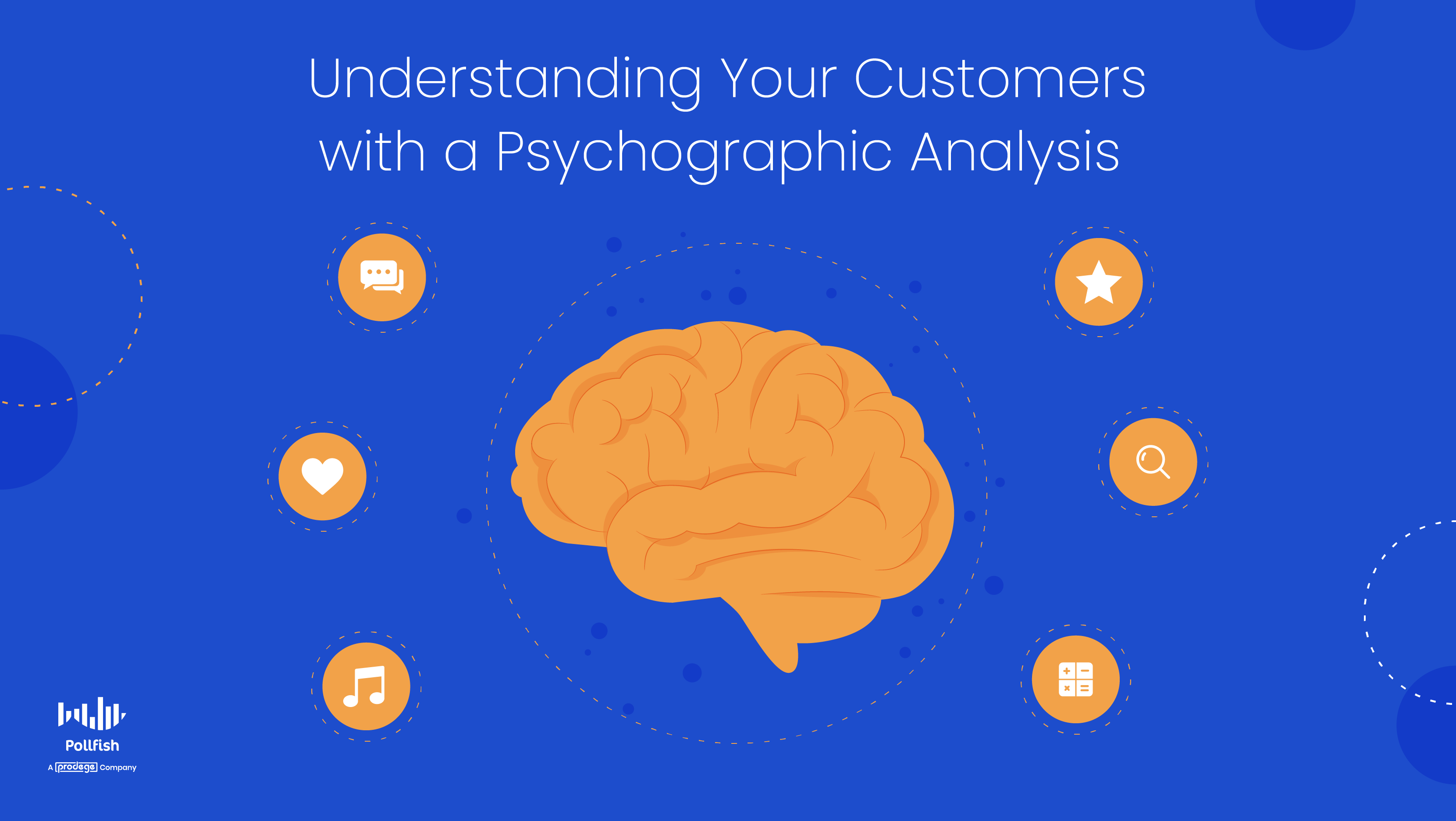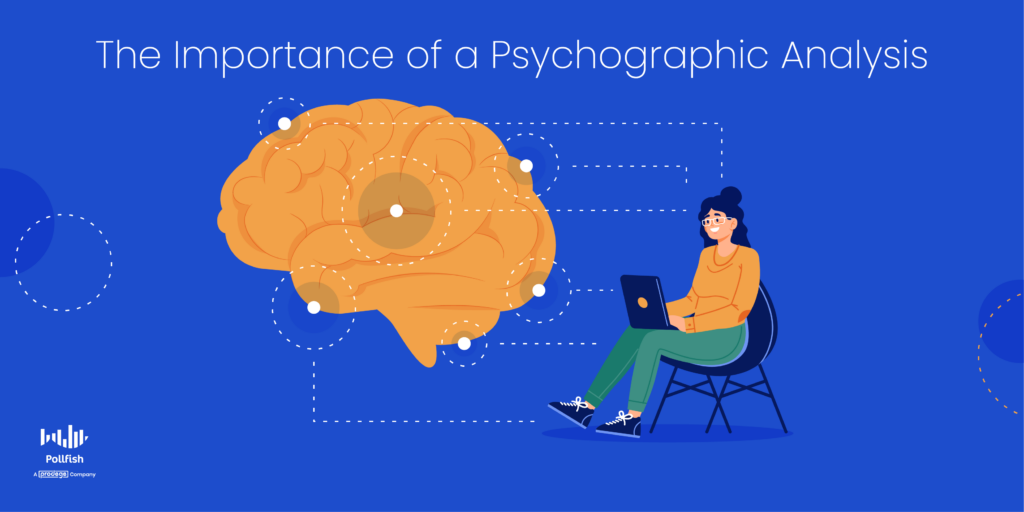Implementing a Psychographic Analysis to Fully Understand Your Customers

In order to understand your target market, you’ll need to conduct a psychographic analysis, a critical kind of consumer analysis that logically follows a demographic analysis. Consolidating both of these forms of analyses allows you to paint an accurate picture of the customers most likely to buy from you — aka, your target market.
76% of customers expect companies to understand their needs. It is therefore critical to analyze your customers’ psychographics, as psychographics aims to understand the cognitive factors that drive consumer behaviors. As such, this kind of analysis allows you to understand the core of your customers’ psyche, making it easier to serve them and meet their needs.
To further prove the importance of understanding your customers, consider this: customer-centric companies are 60% more profitable compared to companies that aren’t. All businesses should study their customers’ psychographics.
This article explains the psychographic analysis in full detail, including its importance, makeup, how to collect psychographic data and how to conduct this kind of analysis.
Understanding the Psychographic Analysis
A psychographic analysis is a kind of customer analysis that involves examining psychological and emotional motivations in order to provide more relevant offers and messaging to the customers.
This kind of analysis is performed to complete a target market analysis, which is a comprehensive analysis of the consumers most likely to buy from you.
A psychographic analysis must follow a demographic analysis, which organizes customers via basic, quantitative information, such as age, gender, occupation, etc. Studying psychographics allows you to understand how demographics relevant to your brand think and behave.
While demographics deal with a specific segment of the population, thereby answering the “who” and “what,” psychographics deal with the motivational factors that influence customer buying behavior. As such, a psychographic analysis provides the “why” behind purchasing behaviors.
The following lists all the factors involved in a psychographic analysis:
- Consumer activities
- Interests
- Goals
- Values
- Belief systems
- Attitudes
- Opinions
- Aversions
- Emotional responses
- Morals and ethics
- Biases and prejudices
- Tendencies and habits
- Hopes
- Thoughts
- Fears
- Lifestyles
Given that psychological and behavioral factors tend to intertwine, this kind of analysis includes both. Additionally, they both hold sway on how, what and how many times customers buy.
As such, this kind of analysis also supports the RFM analysis. An abbreviation for recency, frequency and monetary value, this analysis is used to estimate the value of a customer based on the three data points in its abbreviated title.
Finally, a psychographic analysis allows you to create detailed customer profiles. As such, aside from learning the demographic makeup of your customers, you’ll begin to understand why they buy and behave in certain ways.
How to Collect Psychographic Information
There are various means you can use to collect psychographic information. These involve taking part in secondary and primary research.
The following lays out the different ways you can collect psychographic information:
- One-on-one interviews
- The most traditional route.
- This often involves pre-recruiting participants.
- It can also consist of random cold calling.
- Focus group
- A small group of people selected based on shared characteristics to take part in a discussion for the purposes of market research.
- A moderator conducts a discussion where every member participates at their own will.
- This can be biased, as submissive participants will keep quiet, while extroverted, dominant participants will offer more.
- Website analytics
- This includes internal site analytics.
- Examples include those involved from a web host, such as WordPress.
- It can also include Google Analytics, which displays various site activities.
- Third-party analytics providers
- UX analytics providers
- They often provide capabilities beyond traditional metrics such as traffic and bounce rate.
- Ex: Adobe Analytics
- Psycholinguistic
- This refers to investigating the psychological processes involved in the use of language.
- In market research, it involves understanding customer jargon and slang.
- It deals with the perception, production, and acquisition of language.
- Browsing Data
- This involves examining how customers browse your site.
- It includes studying the time spent on a page, etc.
- It often involves using site cookies, which allow you to monitor customers and remember certain information about them.
- Social media behavior
- This includes likes, shares, clicks, tweets, posts.
- It also involves using social listening to understand when customers mention your brand, niche or competitors.
- Reviews on social media sites provide insight into customers’ attitudes and opinions.
- Syndicated research
- This research is conducted independently, published and sold by a market research firm.
- The firm is industry-specific and funded by several companies in a particular industry.
- It doesn’t allow you to gain full control of your market research study, as the firm dictates the study and owns the data.
- Survey panels
- This research method collects data from a group of pre-recruited and pre-screened respondents.
- A group of panelists takes part in research sessions over a given period of time.
- This is ideal for longitudinal studies, as you can work with the same set of panelists continuously.
- Online survey tools
- This involves market research platforms that allow you to create, distribute and analyze surveys online.
- They put you in full control of your survey study.
- They eliminate bias via quality checks, such as banning VPN users, removing gibberish answers, etc.
The Importance of a Psychographic Analysis
This kind of analysis is essential for various reasons.
A psychographic analysis allows you to complete the customer profile you’ve begun compiling during a demographic analysis. It scopes out the psychological and behavioral factors behind the demographics.
As such, you won’t merely understand who is in your target market, but their mindsets, what they do and why they act in particular manners, putting their customer behavior into perspective.
Through this analysis, you’ll be able to unearth who would be most receptive to your company’s offering.

By understanding why a consumer might buy your product or service, you’ll be able to efficiently create marketing campaigns that appeal to them specifically. For example, some consumers may find it difficult to make healthier lifestyle choices. Through a psychographic analysis, you can discover the psychological nuances that drive this difficulty.
You can then use those insights to appeal to these consumers, by positioning your brand as one that understands the hardships of living a healthy lifestyle and offers simple solutions, ie, your products and services.
With the correct psychographic information in tow, you can then create marketing campaigns with the most relevant customer testimonials, content and messaging. You can also use the insights you gathered from this kind of analysis to adjust sales campaigns, such as creating the correct promotions and incentives that spur customers into buying from you.
Aside from setting up the proper campaigns and serving your customers in their favor, a psychographic analysis allows you to influence consumer behavior. This involves being able to tap into your consumers’ values and what they hold important, along with using effective emotional marketing.
For example, some customers value green initiatives and sustainability. They are thus most inclined to buy from green, sustainable brands. Other customers may have an emotional connection with a particular charity, and thus will be more willing to buy from a business that supports this charity, a similar one or champions its cause.
All in all, all businesses need to understand what motivates their consumers. A psychographic analysis will humanize the raw and statistical data that brands derive from a demographic analysis.
That’s because psychographics refines dry data by painting a picture of who your shoppers are aside from their quantitative traits, allowing brands to know them on a far more personal and intimate level.
How to Form a Psychographic Analysis
Creating a psychographic analysis requires conducting both primary and secondary market research. Unlike in a demographic analysis, studying customers’ psychographics requires conducting qualitative market research.
You’ll need to apply this approach to every step in the process, including when you contextualize your demographic analysis — this is a major part of forming a psychographic analysis, as the psychographic portion is meant to delve into the psychological factors of a company’s key demographic targets.

The following lays out how to conduct a psychographic analysis:
- Begin by drawing up your findings from your demographic analysis.
- Consult the different segments you’ve discovered from the secondary and primary research you conducted in your demographic analysis.
- Next, perform secondary research; use the current market segment insights you have and dig further by using all kinds of secondary sources. These include:
- Government websites
- Market research sites with publicly available data.
- Trade magazines
- Blogs
- News sites
- Websites dedicated to CX and consumers
- Niche sites that discuss consumers in your industry
- Add the information you’ve discovered in the demographic profiles you’ve created.
- For example: do men between the ages of 20-35 tend to make hasty purchases? Or perhaps they’re more likely to buy the latest version of electronics?
- Run a primary market research campaign.
- Use the profiles you created in the previous step to brainstorm your most pressing psychographic questions.
- To better understand each demographic segment you highlighted, conduct a survey with multiple audiences. Alternatively, conduct several surveys on each demographic group. (The former is more efficient; you’ll need an online survey platform that provides this).
- Consider dividing your surveys and question types by the following broad topics, which include corresponding sub-topics. Since it is best to keep surveys short as a best practice, it is ideal to create multiple surveys. First, divide them into the following:
- Emotional response
- To understand consumer: feelings, aversions, desires, fears, emotional connections and sensitivities
- Consumer activities
- To understand consumer: habits, spending patterns, purchasing pains, frequency of purchases, lifestyles
- Interests
- To understand consumer: lifestyles, habits, curiosities, needs, biases, likes, tendencies
- Goals
- To understand consumer: needs, aspirations, how they seek to remove pain points
- Values
- To understand consumer: belief systems, moral and ethics, biases and prejudices,
- Opinions
- To understand consumer: attitudes, hopes, perceptions of your brand and others and lastly, their thought
- Emotional response
- Conduct follow-up surveys and/or questions, if need be.
- Use a survey platform that offers advanced skip logic, if you opt for the latter. This is because this functionality routes users to specific follow-up questions, based on how they answered a previous question.
- Analyze your findings.
- Use your market research platform’s dashboard to visualize and make sense of your data.
- Form concrete customer segments and personas from your psychographic survey findings and analysis.
- Take action.
- Use the findings from your psychographic analysis to take a wide range of actions, such as establishing new marketing campaigns, tweaking existing campaigns, innovating on products, improving customer service and more.
- Conduct regular surveys of your target market sample to continuously stay in the know about their feelings, opinions and all else that their psychographics include.
Delving into the Minds of Your Customers
A psychographic profile enables you to know how your ideal customers think, feel, behave, value and much more. This kind of customer intelligence is vital, as it not only paints a clear picture of your target market, but it also allows you to understand your customers’ buying decisions and behaviors.
This could mean the difference between earning, retaining or losing customers. As such, you should conduct a psychogrpahic analysis of your customers to understand what makes them tick, how they respond emotionally, how their values shape their buying behavior and much more.
To do so, you’ll need to use a quality online survey platform. You should use an online survey platform that makes it easy to create and deploy all kinds of surveys.
It should extend random device engagement (RDE) sampling so that you can reach customers in their natural digital environments, as opposed to pre-recruiting them.
Your online survey platform should also offer artificial intelligence and machine learning to remove low-quality data and offer a broad range of survey and question types.
Additionally, it should also allow you to survey anyone. As such, you’ll need a platform with a reach to millions of consumers, along with one that offers the Distribution Link feature. This feature will allow you to send your survey to specific customers, instead of only deploying them across a vast network.
With an online survey platform with all of these capabilities, you’ll be able to properly conduct an informative psychographic analysis.
Pollfish Marketing Team
Ready to Try Pollfish?
Create your survey with AI, target high-quality respondents starting at $0.95 per complete, and start getting results in just minutes in real-time. From running a simple product concept survey to managing a constant stream of trackers for dozens of clients in dozens of countries, we’ve got you.
